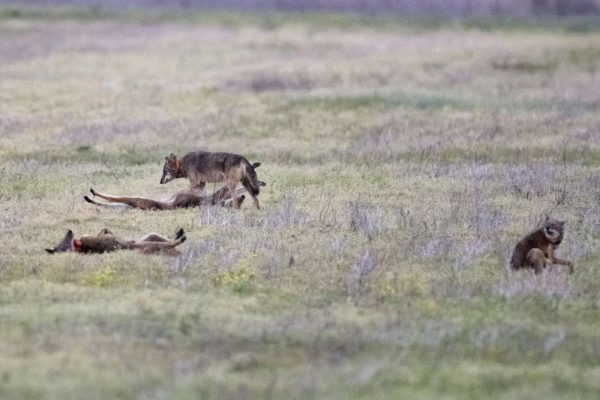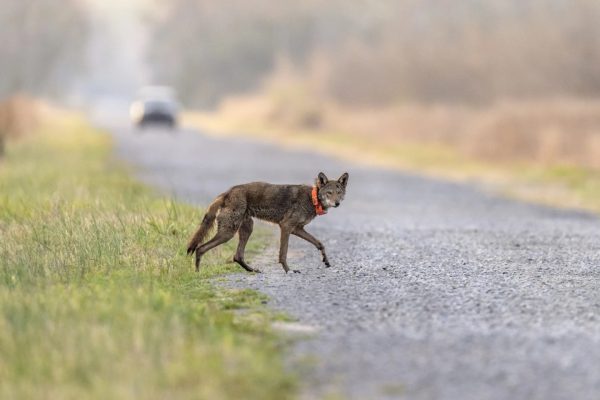The creature’s swift speed is attributed to its muscular long legs. Its dark reddish-brown coat gives it the ability to blend in seamlessly with the surrounding environment. Golden eyes are essential to tracking its prey. Despite numerous adaptations that help them survive in the wild, red wolves are now classified as an endangered species due to the impacts of humans.
Less than 20 reside in eastern North Carolina; the last place they still live in the wild.
“Red Wolves are a topic that can be a bit controversial,” Liz Rutledge, vice president of the North Carolina Wildlife Federation, said. “It has a long history that people are very aware of.”
The controversy: choosing to support wild red wolves.
Starting in 1967, the red wolf or Canis rufus was declared “threatened with extinction by” the Endangered Species Preservation Act. In 2020, there were seven known to live in the wild, according to Defenders of Wildlife.
Red wolves are considered a keystone species, meaning they help keep an ecosystem in balance, as stated in National Geographic. Red wolves are predators, they keep the populations of prey from overpopulating. Wildlands Network emphasizes that if they were to disappear, their prey, white-tailed deer, would boom in population size and overgraze lands in the area where red wolves remain.
“From the Wildlife Federation standpoint, we support this species,” Rutledge said. “We think it’s important ecologically to have predators and large carnivore species in the landscape.”

In other words, they are the world’s most endangered wolf, and their survival is crucial to eastern North Carolina’s fragile ecosystem.
In 2020, The Southern Environmental Law Center (SELC) filed a case against the U.S. Fish & Wildlife Services (USFWS), claiming that the agency had abandoned its efforts to release captive red wolves into the wild, which was proven successful in the past.
x“[SELC] filed a lawsuit and sought emergency release asking the court to ensure that the status quo was maintained during the pendency of litigation,” senior attorney and Wildlife Program leader Ramona McGee said.
The court granted this injunction and told the USFWS they had to start releasing yearly plans as they had in the past. When this case was filed, only seven red wolves were living in the wild.
The USFWS’s inaction “hampered recovery of the red wolves for a while,” according to McGee, but since the hearing, the agency has resumed releasing them into the wild.
Habitat loss and car wrecks are the biggest threats to the survival of the species. These wild predators hunt for their prey species, which are commonly located in edge habitats: roadsides, urban areas and tree lines.
They also consume the occasional roadkill. To lower vehicle mortality rates, USFWS has attached bright orange reflective material to the wolves in the wild to deter hunters or vehicles as part of their Revised Recovery Plan for the Red Wolf (Third Edition), which was released in April 2023.

Gradually, the red wolf population is on an upward trend. At the end of 2024, 19 wild red wolves live in the wild, and about 241 are held in breeding captivity, according to the U.S. Fish & Wildlife Service.
“I feel very hopeful,” McGee said. “We are in a very exciting time for red wolves and hope to see wild red wolves rebound again with future generations growing and populations for generations to come.”
Correction, Dec. 5: A previous version of this article’s subhead online and in print incorrectly identified the department involved in a lawsuit filed by The Southern Environmental Law Center. The case was filed against the U.S. Fish & Wildlife Services. The subhead has since been updated.










